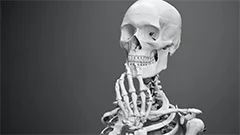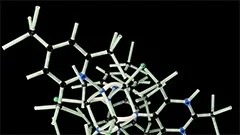Introduction
The study of the skeletal system, particularly the bones that constitute the upper limb, is a crucial aspect of anthropological and biological research. The upper limb, or the arm, is an essential part of the human body, responsible for various complex movements and activities. This course aims to provide a comprehensive overview of the osteology of the upper limb, focusing on its anatomical structure, evolutionary history, functional adaptations, and pathological conditions.
Brief History of Osteology
Osteology as a scientific discipline has a rich historical background, dating back to the early civilizations such as Ancient Egypt, Greece, and Rome. The study of human bones was primarily used for forensic purposes and in religious practices. However, it wasn't until the 17th and 18th centuries that osteology began to evolve into a more systematic and rigorous field of study with the works of scientists like Johann Friedrich Blumenbach, Georges Cuvier, and Thomas Henry Huxley.
Importance of Studying the Upper Limb
Understanding the anatomy and evolution of the upper limb is essential for various reasons. Firstly, it provides insights into our species' adaptive history, helping us understand how humans evolved to become bipedal and highly dexterous beings. Secondly, studying the upper limb can help in understanding and treating pathologies that affect this region, such as arthritis, fractures, or congenital disorders. Lastly, it contributes to anthropological research, helping us understand human evolution and variations among different populations.
The Upper Limb Skeleton
Clavicle (Collarbone)
The clavicle is the first bone we will discuss in the upper limb. It is a long, thin bone located on either side of the neck, connecting the scapula to the sternum. It provides stability for the shoulder girdle and enables arm movement. The clavicle has two articulating surfaces, the acromion process of the scapula and the manubrium of the sternum.
Scapula (Shoulder Blade)
The scapula is a flat, triangular bone located on the back of the thorax. It provides a site for attachment of several muscles that move the upper limb. The scapula consists of three main parts: the spine, the glenoid cavity (which articulates with the humerus), and the coracoid process.
Humerus (Upper Arm Bone)
The humerus is the largest bone in the upper limb. It runs from the shoulder to the elbow, where it articulates with the radius and ulna of the forearm. The humerus has a head, a shaft, and two condyles at its distal end.
Radius and Ulna (Forearm Bones)
The radius and ulna are the two bones that constitute the forearm. The radius is more prominent on the thumb side of the forearm, while the ulna is located medially. Both bones articulate with the humerus at the elbow joint. The head of the radius and the ulna are found at their proximal ends, where they articulate with the humerus.
Carpal Bones (Wrist Bones)
The wrist contains eight small bones known as carpals. They are arranged in two rows: the proximal row consists of the scaphoid, lunate, triquetral, and pisiform bones, while the distal row includes the trapezium, trapezoid, capitate, and hamate bones. The carpal bones provide stability to the wrist joint and enable complex movements.
Metacarpals (Hand Bones)
The metacarpals are the five long bones of the hand, located between the wrist and the digits. Each metacarpal has a base that articulates with a carpal bone and a distal end that articulates with a phalanx of a finger. The first metacarpal is the largest, corresponding to the thumb, while the others are progressively smaller.
Phalanges (Finger Bones)
Each finger consists of three phalanges: proximal, middle, and distal. The exception is the thumb, which has only two phalanges due to its unique anatomical structure. The phalanges are long, slender bones that provide flexibility and precision for fine movements.
Evolutionary History and Functional Adaptations
The upper limb underwent significant changes during human evolution. Primarily, the transition from quadrupedal to bipedal locomotion necessitated modifications in the upper limb's structure and function. This section will discuss these adaptations and their implications for our understanding of human evolution.
Pathological Conditions Affecting the Upper Limb
This course will also cover various pathological conditions that can affect the bones of the upper limb, including fractures, arthritis, and congenital disorders. An in-depth examination of these conditions will provide valuable insights into their causes, symptoms, and treatments.
Conclusion
The osteology of the upper limb is a fascinating subject that offers numerous opportunities for exploration and discovery. Understanding the structure, evolution, and pathologies of this region not only contributes to our knowledge of human biology but also provides insights into our species' adaptive history and variations among populations. This course serves as a comprehensive overview of these topics, offering a solid foundation for further research and study in the field.
MCQ: Test your knowledge!
Do you think you know everything about this course? Don't fall into the traps, train with MCQs! eBiologie has hundreds of questions to help you master this subject.
These courses might interest you
Create a free account to receive courses, MCQs, and advice to succeed in your studies!
eBiologie offers several eBooks containing MCQ series (5 booklets available free for each subscriber).




